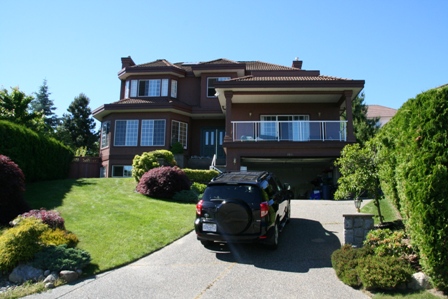|
|
|
|
|
Earthquake Experiences in Vancouver |
|
20090713 |
|
 |
|
|
|
I happened to live in Japan four years. By statistics in the Tokyo area only the earthquakes happen once every day. Well, if you are on a train or in subway or on a bus you won't feel like the earth trembling. However when at home once a week I was experiencing subtle shakes. It is a well known fact that Japan is a country of earthquakes and tsunami. What about Vancouver?
On the average, at least 75% of the world's earthquakes each year occur around the rim of the Pacific Ocean, originating along the Aleutian Arc, the Philippine or southwest Pacific trench systems, the East Pacific Rise, and the San Andreas fault system in California. Vancouver is thought to be near the forward edge of one of the moving blocks, and thus it is reasonable to expect that residents will feel earthquakes from time to time.
One of the current explanations for the seismic activity along the western coast of North America, is that the continent, or American plate, is moving westward and somewhat north from a spreading centre in the mid-Atlantic. This huge plate, moving very slowly, is bumping against, or overriding, or sliding along a similar Pacific plate. There may be another smaller plate within the American plate which includes Vancouver Island. This hypothetical feature is called the Juan de Fuca plate; if it is an active, moving plate, it plays an important role in the earthquake experiences of the Vancouver district.

The first seismograph in this area was in Victoria in 1898; it was not very sensitive to the seismic waves of small local earthquakes, but did record a great many events. A seismograph was installed at Horseshoe Bay in West Vancouver in 1951, and for about 10 years it produced records of local earthquakes which could be correlated with data from the Port Alberni station and a re-instrumented Victoria station.
The first mention of an earthquake in the Vancouver district was in Fort Langley on November 23, 1827. Visual 8 lists the number of earthquakes felt in the Vancouver district from 1827 to date by decade. The list is considered to be incomplete, and represents a minimum number of tremors. The list of earthquakes suggests that in the Vancouver region small earthquakes, often in groups, can be felt on the average less frequently than once per year.
At irregular and infrequent intervals, Vancouver residents feel a much more severe earthquake. These events cause some discomfort to persons, especially in high buildings, and may do damage. This activity can be expected to continue at near the present rate of 5 per 100 years.
An earthquake on December 14, 1872 which had an epicentre east of Vancouver, south of the Fraser River, and possibly in Washington was felt very strongly over the whole region. Major landslides occurred in the Chilliwack area, and at Matsqui waves were seen on the ground. This was truly a major, earthquake with a magnitude of at least 7. An earthquake of a magnitude of at least 5 occurred at 3:44 p.m. on January II, 1909 in the San Juan Islands. It was generally felt over the Vancouver region and caused minor damage. A similar but slightly larger earthquake occurred at the same location on January 23, 1920. At 10: 15 on Sunday, June 23, 1946 the whole Vancouver Island region and the Lower Mainland were shaken by an earthquake of magnitude 7.3, which had an epi- centre at the north end of the Strait of Georgia. It was felt as far away as Penticton, and caused considerable damage in the epi- centre area near Courtenay, Powell River and as far away as Alberni. Chimneys were cracked or broken in Vancouver and Victoria. This is the earthquake that residents of Vancouver recall most vividly. The earth has been quiet in the Vancouver region since this date except for minor events in February 1969 and November 30, 1975. This most recent earthquake's epi- centre was under the Strait of Georgia, mid-way between Vancouver Island and Point Grey. It had a magnitude of4.5 and its focal depth was small. A series of aftershocks were felt, one of which reached a magnitude of 3.5.
These was the earthquake Vancouverites felt with a jarring, rumbling, shaking or noisy movement. There are, however, regional earthquakes which are felt as a rolling or gentle vibratory motion. The event of magnitude 7 west of Estevan Point on the west coast of Vancouver Island on December 6, 1918; the event of magnitude 8 on the north end of the Queen Charlotte fault on August 21, 1949; the 2 events near Seattle of magnitude 7 and 6.5 on April 13, 1949 and April 29, 1965 respectively all were noticed in Vancouver, but because of the distance to the focus there was little damage In the Vancouver area.
Tsunamis are ocean waves generated by a large earthquake which disturbs the ocean floor. Fortunately the earthquakes in the Strait of Georgia have not generated tsunamis. Earthquakes around the Pacific rim do generate tsunamis which reach the Canadian coast, but only one had sufficient amplitude to cause damage; it reached Port Alberni after the huge Alaskan earthquake (magnitude 8.4) on Good Friday in 1964 and caused a great deal of damage at Port Alberni and elsewhere along Vancouver Island.
Moisha Grigoriants
|
|
|
|

